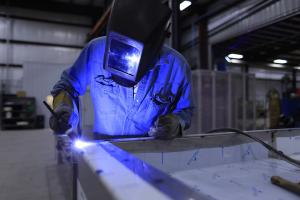
One of the most influential trends evolving in metal fabricating in the last few years – and in the foreseeable future – is quality control. From an absolute investment, both technical and skill-based, into ever finer fabrication, the emphasis is now more holistic. The quality and finishing of the project is just as important, if not more so, than raw maximum technical capability.
Metal fabricating projects include measures of quality throughout the process. But a much greater emphasis on this aspect has meant there has been significant growth in how quality can be measured.
An effective quality control program in metal fabricating is borne from a quality minded culture and an investment in testing equipment.
This article will focus on a few different types of sensors that are used to measure quality. It does not consider the reliability of metal fabricating processes such as procurement and workflow, which are important to the quality of finished article too.
Ultrasonic – Ultrasonic sensors rely on the bounce back of an ultrasonic signal. These sensors can be used to detect complex shapes and objects and render them accurately. Ultrasonic sensors can be used to measure surface undulations extremely accurately.
Vision – As the name suggests, vision sensors work on an optical assessment of the application. Vision sensors come in a wide range of configurations, depending on the use they are going to be put through in metal fabricating. For instance, sensors configured for a fast moving production line require a rather different setup compared to high fidelity optical sensors which must take slower but more accurate measurements.
Inductive – Inductive sensors have been used in metal fabricating for decades now. They are the most common of all sensors, and have seen a great deal of improvement over time. The resolution of inductive sensors has grown in leaps and bounds in the last few years, and their versatility in measuring angles and the like makes them extremely handy in a number of situations.







